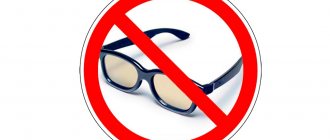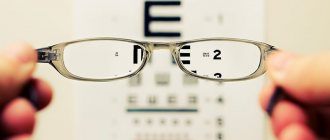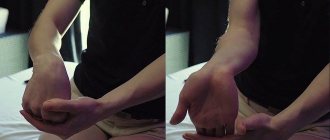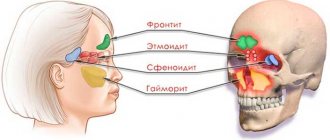Concentrate your gaze on the center of the picture. Be careful not to move your eyes or scan the speakers. Mark identical blocks with your peripheral vision. The goal is not to find identical blocks as quickly as possible, but to concentrate your gaze on the center of the screen with your peripheral vision and find the necessary information.
Learn to read quickly
Your speed reading abilities will increase even more if you spend ten minutes a week doing this training.
How can you train the reader's point of view?
Schult tables
- randomly located numbers (or other objects). Tables are usually used for research, training and development of the pace of information perception, including the speed of visual search movements. Searching eye movements are the basis of fast reading. Schulte tables allow you to expand the reader's field of view. A wide field of view significantly reduces the time it takes to detect text fragments needed by the reader.
Some information about human vision
- The maximum field of vision for a person is 35 degrees. The zone of clear vision is 14 degrees. The area of best vision is 1.4 degrees. The field from which information is retrieved, as studies have shown, can be significantly expanded, for example, by using Schulte tables.
- When a person's gaze moves, the greatest visual acuity occurs in the central zone of the retina - the zone of clear vision. Everything that lies outside this zone of clear vision, on the periphery, is seen by a person as if in a fog. A wide field of view reduces the time it takes to search for informative text fragments.
- Working with the Schulte table trains volumetric attention. The main thing is not to roam around with your eyes, the main thing is to concentrate your gaze on the center of the Schulte table to see the upper, as well as the lower left and right numbers.
With regular use of Tables, peripheral vision increases and this allows you to increase reading speed by covering a larger space of the readable text, and by mastering the one-time mode of analyzing printed characters.
Rules for working with Schulte tables.
- The time of study should be chosen so as not to overwork.
- When searching for consecutive numbers, the eyes are allowed to fixate in the center of the table. Horizontal eye movements are prohibited. The distance from the table to the eyes is as usual.
- You need to find numbers by silent counting in ascending order from 1 to 25 (without skipping). Found numbers are indicated only by sight. As a result of such training, the time for reading one table should be no more than 20 seconds.
- The gaze is fixed in its center of the table in order to cover the entire table.
- When working with Schult tables, you should remember that training is not the main goal here. It is important to expand your field of vision.
Peripheral vision training - find out the best development techniques
The functioning of the human visual system is determined by the activity of two types of photoreceptors - rods and cones. It is designed in such a way that in “normal mode” (without concentrating your gaze in a certain place), the viewing sector is measured at approximately 120.
This sector is viewed in general detail, without details (for example, you look at a park landscape, see benches, trees, but do not distinguish their species). But as soon as you look closely at one of the trees to recognize it as, for example, an oak, all other details fall out of the viewing sector.
This is how central vision works, for which cones are responsible in the complex system of the eye.
Peripheral vision training
Central vision allows you to determine the following functions of an object:
- form;
- color;
- size;
- brightness.
Everything that falls out of sight when concentrating on an object, but is visible in the general mode, is the result of the work of the second type of photoreceptors, rods. It is commonly called peripheral vision.
Both of these types - central and peripheral - together form the process of psychophysiological processing of objects around us and, interacting, provide basic information about them - sizes, shapes, location of objects relative to each other, etc.
Photoreceptors of the visual system
: Activation of peripheral vision
Tibetan graphic symbol for the development of peripheral vision
Another simple and effective way to increase the acuity of lateral vision, gifted by the Tibetans - the so-called. Tibetan graphic symbol. You can practice by contemplating this symbol on the computer screen, but it’s easier to print it out in good resolution.
- Starting position: sit on a chair, back straight, back muscles relaxed. The symbol is located at a distance of 15 cm at eye level.
- Place your palms together in a bowl shape and gently place on the eye area, without touching the eyeballs, for 60 seconds. Then remove your hands from your eyes.
- Looking at the symbol, make circular movements with your eyes, enclosing it in a circle BEHIND the points marked in the picture. Draw the circle first clockwise for 30 seconds, then counterclockwise for the same time.
- Visually superimpose a clock face on the symbol (the dots should be in place of the numbers 12, 2, 4, 6,8 and 10). Move your gaze diagonally from points “2” to “8” for 30 seconds, then repeat the same with points “4” and “10”.
- Blink a few times and cover your eyes with your palms. Symbol training is complete.
Tibetan gymnastics helps to thoroughly strengthen the eye muscles
If you wear glasses or contact lenses, they should be removed during peripheral vision training. Regular use of the Tibetan techniques described above allows you to achieve not only a significant increase in visual acuity, but also thoroughly strengthen the muscles of the eye.
Features of correct work with tables
- It is best to perform the exercises in a sitting position, in a well-lit room. The optimal distance at which the table is placed is 45-50 cm.
- Avoid articulation (the numbers found must be noted in your mind without saying them out loud or even moving your lips).
Gaze should be the only way to fix the numbers in the table. At first, this may seem like a difficult task, but after a little experience with Schulte tables, you can easily do without articulation. - Systematicity is the key to success.
Regular training, at least 3 times a week, gives tangible results (at the beginning, you can do the exercises daily). You need to devote at least 20-30 minutes to training with tables - just “passing” the table will not have much effect.You shouldn’t overexert yourself either - if you feel that during training your eyes begin to hurt or water, it’s better to postpone it for a few hours or another day.
- Just like with the Tibetan graphic symbol, you can practice with Schulte tables directly on the computer screen.
There are special online programs that allow you to generate such tables in unlimited quantities.
Multi-colored Schulte table
: Schulte table
The classic Schulte table has 25 cells with numbers located on a white background. But there are other varieties of this simple visual simulator, intended for those who have achieved some success in working with the classic table:
- Schulte grids 10x10 (numbers from 1 to 100);
- multi-colored tables (cells are painted in different colors);
- letter matrices (instead of numbers in the table, you need to look for letters of the Russian, English, Latin, etc. alphabets).
There are also Schulte tables adapted for the development of speed reading in children. The principle of working with them is exactly the same as with classic ones, but they contain only 9 cells.
Other methods of training peripheral vision
The entire world around us, in fact, is a large simulator for training lateral vision. You can perform simple exercises even while on the road: try to read signs, road signs, etc. with peripheral vision, without focusing your gaze on them.
Another simple and effective exercise is to watch a crowd of people from a certain distance and try to follow the movements of each of them with your peripheral vision.
Exercise for passengers (it is advisable to perform it when you are traveling in the front passenger seat of a car, while the car is moving in a straight line). Focus your gaze on any object located at a considerable distance (tree, building, etc.).
As soon as the concentration of your gaze becomes sufficient to distinguish the details, immediately move your gaze to the left, to another object and focus on it. For some time, the focus of your gaze splits - you continue to clearly see both the first and second objects.
The main advantage of any method of training peripheral vision, be it the Tibetan method, Schulte tables or others, is that they work flawlessly - progress will be made in any case. It is only important to keep your training systematic and not to interrupt it after several sessions, even if they seem easy and boring.
Source: https://linzopedia.ru/trenirovka-perifericheskogo-zreniya.html
Angle of view and speed reading
A person has the following vision characteristics:
It is better not to think at all about finding any truths than to do it without any method (Descartes)
1. By area of coverage:
- The area of best vision is 1.5 degrees.
- Clear vision zone 15 degrees.
- Maximum vision area 35 degrees.
2. By type of eye movement:
- Drift – slow eye movements.
- Fast jumps.
3. By the nature of eye movement:
- When reading, 90% of the time the gaze is motionless,
- For 10% of the time the eye makes jumps.
When examining an object, a person’s eyes make jerky movements along its contour with a frequency of 2-5 times per second. During the reading process, jerky movements occur 3-4 times per second in both a fast and a slow reader. The difference between people lies in the amount of information perceived at the moment of fixation of the eye. Text perception occurs only during eye fixations. Long pauses are caused by unfamiliar words or typos in the text. To speed up reading, it is necessary to expand the coverage angle of the text and increase the recognition of the text.
Text recognition is trained by constant reading. Gradually, consciousness forms a database of words, terms and verbal cliches. By applying accumulated experience, a person spends less time recognizing words in the text.
Online flash trainings for mastering speed reading skills
| Expanding the angle of view | Shuffled letters in words perceive the text in blocks | Schulte table | Torn text |
| Count the numbers | diagonal reading training | Schulte table | Reading without gaps between words |
| Reading without vowels | Deconcentration | Rotating text | Schulte table |
Reading texts diagonally
A developed angle of view helps you learn to quickly grasp important information in the text and move on to a new principle of reading - reading diagonally. During diagonal reading, a person moves their gaze from the top corner of the page to the bottom. As soon as the eye catches on something incomprehensible or important from the point of view of the subconscious, the reader stops and goes into normal reading mode.
Here are the rules for reading texts diagonally:
- Relax your eyes before reading
- Set a specific reading goal
- Move your gaze from the top to the bottom
- As soon as any word attracts attention, then switch to normal reading.
Wedge tables and speed reading
Wedge tables were invented in the last century to train visual angles and were made on paper. Much time has passed since then, and it turned out that it is much easier to create these tables using software.
Slowly move your gaze down the table until your consciousness ceases to perceive information. This is your current perspective. As you can see, it can be wide enough for the average person.
Useful video
The most effective exercises to improve visual perception:
Author's rating
Author of the article
Alexandrova O.M.
Articles written
2031
about the author
Was the article helpful?
Rate the material on a five-point scale!
( 8 ratings, average: 4.38 out of 5)
If you have any questions or want to share your opinion or experience, write a comment below.
About fast reading and peripheral vision
Almost all adults have the ability to increase their reading speed without losing comprehension. Sometimes it turns out that understanding increases with fast reading, but understanding of the text decreases with slow reading.
One important strategy for improving reading speed is to widen your viewing angle. Do you notice how your eyes jump from word to word when you read a book? The eyes don't just jump from place to place. They stop so that they can take in the information. They collect information that is transmitted to the brain. In the brain, information is compared with previous experiences. Next, the brain draws conclusions about the expected continuation of events and where the eye should jump in the next moment.
What's happened
Speed reading is a person’s ability to perceive text at high speed. It is to perceive, and not just mechanically read. If you teach a child to swallow words at a phenomenal speed, without understanding what he has read, then speed reading will not help you with your studies, but quite the opposite.
Speed reading in the correct sense is usually understood as a developed skill in processing educational text. These are paragraphs from textbooks and articles on scientific topics. The reading speed should be at least 120-150 words per minute. At an older age it reaches up to 200 lexical units.
Any child can learn to speed read. But, according to psychologists and teachers, the optimal age is from 10 to 12 years. Although children 7 years old and even 6 years old have positive experience in using the technique.
Exercise 2-3
To complete this exercise, prepare new cards with letters of the alphabet and numbers, which should be one third smaller than the previous ones. Then continue with the exercise already described above. After you learn to distinguish letters and numbers on new cards, you can further reduce their size and do this until you get to cards that are small enough.
ALSO SEE: Twelve simple exercises to develop plasticity
If you do this exercise diligently, you can even learn to read large print books using your peripheral vision.
Of course, you are more accustomed to reading using direct vision, and the above exercise is not intended to teach you to read using peripheral vision, but simply helps you develop it, helping to increase the amount of information you receive and awakening to life previously dormant areas of the brain that from inaction they lose all their qualities.
Remember that developing peripheral vision is important for maintaining the physical health of the brain and increasing the amount of information received.
In addition to the fact that we do not catch details that fall into the area of lateral vision, we also sometimes miss little things when looking at objects that are directly in front of us. Remember how often you were asked to describe something, and you answered that you didn’t notice what it looked like.
To learn to grasp details under normal circumstances, try doing the following exercise once or twice every day for at least one minute.
Exercise 3-2
Buy or make flashcards similar to the ones you used to develop your peripheral vision and write simple words or numbers on them. After this, your assistant should stand in front of you and quickly show you these cards in random order. He should not allow you to look at the cards longer than the time required to pass them quickly before your eyes.
ALSO SEE: Shortcut to the Heart: How to Arouse Positive Emotions in Other People
It is clear that at first you will not be able to see the word or number depicted on the card, but then, after several exercises, it will become easier and easier for you to understand the words written on the cards.
Many people have difficulty tracking moving objects. This is most noticeable in the stadium during a match, when spectators only see the moment when the players hit the ball. They don't see the ball in flight. If you are having difficulty tracking moving objects, you can try various exercises.
For example, you might be watching the neighborhood kids play basketball or trying to read the license plates of cars passing by. And for serious work at home, you can use the following exercise.
Exercise 4-2
To complete this exercise you will need an old turntable. Place the record on the player, turn it on and try to read the inscription on the record. If this seems too difficult to you (and it probably will), then take a sheet of thick paper of a suitable size and write some kind of inscription on it in large letters.
Prepare several of these “records” with different inscriptions and place them in random order (so you don’t know which one) on the player, turn it on and try to read the inscription you made. You can start at a low speed and then gradually increase it.
Continue to improve your observation skills by studying the practical course “Development of intuition and observation”:
Development of intuition and observation: practical interactive multimedia distance course
Explore today
Contour/volume correction of lips and perioral area. Best Augmentation Approaches and Techniques
Memory development
Management Accounting
Self-management: career management
Etiquette and business communication skills
Development of intuition and observation
Marketing research
Dissection cadaver course on injection techniques in cosmetology. Day three: live injections
Project management











